
Hyundai Nexo review
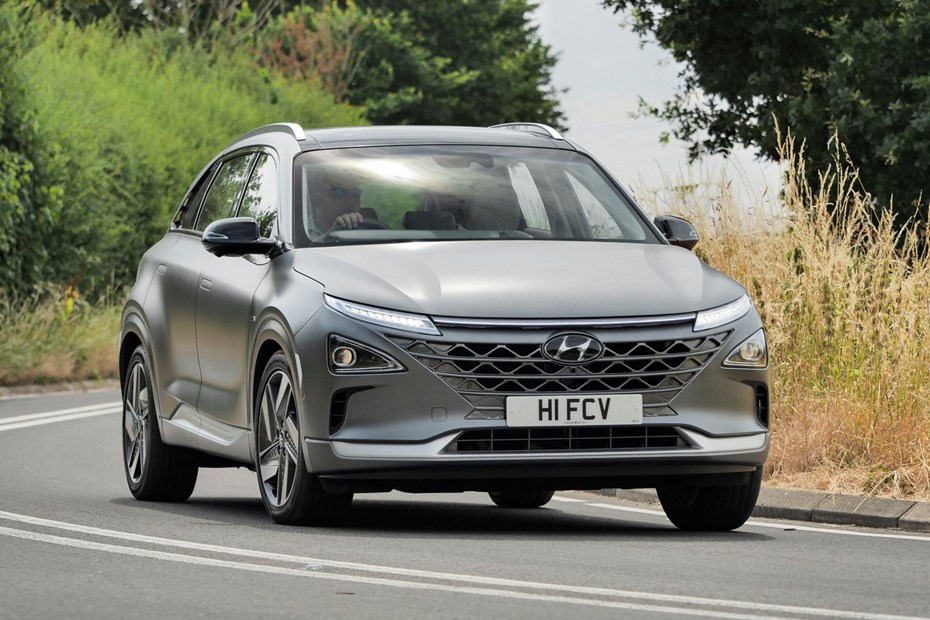
At a glance
| Price new | £69,495 |
|---|---|
| Road tax cost | £0 |
| Insurance group | 39 |
Get an insurance quote with

|
|
| Fuel economy | Not tested to latest standards |
| Number of doors | 5 |
| View full specs for a specific version | |
Available fuel types
Alternative fuel
Pros & cons
- It emits nothing but water
- Supremely comfortable and quiet
- Potential 400-mile fuel range
- List price is prohibitively high
- A serious lack of fuel stations
- Electric cars cheaper to buy and run
Hyundai Nexo SUV rivals
Overview
The Hyundai Nexo is a hydrogen fuel cell-powered SUV. The firm has a track record of making hydrogen-powered cars, starting with the ix35 Fuel Cell – the company’s first foray into hydrogen-powered technology, but this is a far more enticing and rounded proposition for early adopters of the tech.
Tthe Nexo is a bespoke model rather than a conventional SUV modified to use fuel cell technology. That means it doesn’t suffer from the compromises of the Hyundai ix35, other than the fact that filling stations are few and far between in these early days.
Hydrogen fuel cell technology means it doesn’t come cheap, with the Nexo available for £69,495 which falls slightly to £66,995 once the Government’s Plug-in Car Grant (PiCG) for zero-emissions vehicles is taken into consideration. However, you do get an ultra-modern car that’s still a fashionable SUV with space, a long list of standard equipment, and the knowledge that the car you’re driving is as clean as it can be in terms of harmful emissions (there are none).
The Nexo doesn’t have many rivals either, just the soon-to-be-replaced Toyota Mirai – another hydrogen-powered vehicle that’s very expensive to buy, albeit with ungainly four-door saloon bodywork – and the Honda Clarity, but that’s not sold in the UK. Alternatively, the most similar kind of cars are the latest suite of electric SUVs – namely the Audi E-Tron, Jaguar I-Pace and Mercedes-Benz EQC.
Why should I consider a hydrogen fuel cell car?
There are a number of reasons why hydrogen may prove the fuel of choice of the future. The biggest is that it’s completely sustainable and ultra-clean in use – the by-products of electricity generation using a fuel cell to power a car are simply clean air and water. There are no nasty emissions at all. Furthermore, long-distance driving range is easier to achieve than it is with electric vehicles.
Hyundai states a real-world 370 miles is realistic in the Nexo, and we’ve got no reason to doubt this so far. The official range is higher (413 miles), but calculated in lab conditions that you’re unlikely to be able to recreate driving in the real-world.
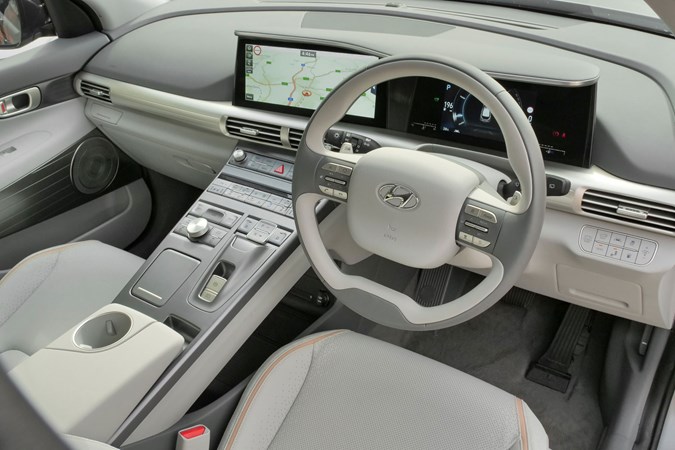
How do you refuel a hydrogen car?
There’s a significant problem with a lack of filling stations – there are 13 publicly-accessible in the UK at time of publication (but that number is set to grow) – and there are organisations investing money to change this now. Hydrogen power is becoming more interesting, particularly when across Europe fuel cost works out at less than 50% of that of petrol or diesel.
It’s also as easy to refuel a hydrogen car as a petrol or diesel one. Connect the filler pipe to the nozzle and wait for it to refill the tank in stages, building pressure as it does so. Time-wise it takes about twice as long as refilling a tank with petrol or diesel, but this is still significantly less time than it takes to charge an electric car.
Lots of high-tech equipment as standard
The Nexo comes loaded with every piece of kit available across the regular Hyundai range as standard. The 12.3-inch multimedia touchscreen is different though, with sharp graphics and a rotary dial to control it, meaning you don’t need to reach forward to touch it (although you can if you want to).
The cabin is designed with driver safety in mind, so there are loads of physical buttons – we’re happy to see this in a world where more and more functions are being integrated into touchscreens because it’s far safer than having to negotiate menus while you’re driving, however the majority are all the same size and shape (and there are a lot) and light in colour so you’ll need to learn where they all are.
Click through the next few pages to read everything you need to know about the Hyundai Nexo including its practicality, how much it costs to run, what it’s like to drive – and whether we recommend buying one.
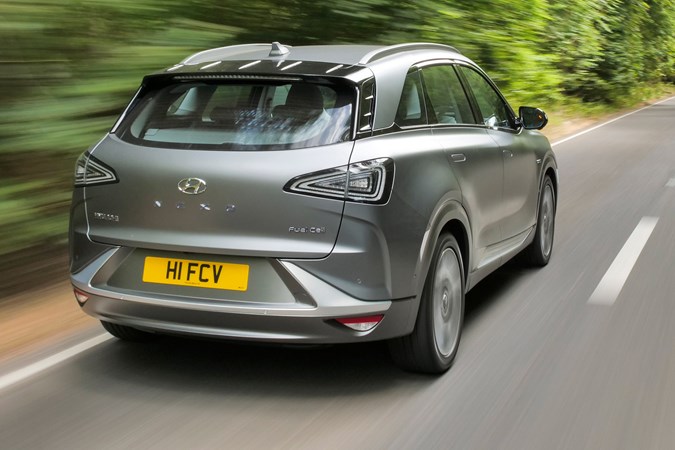






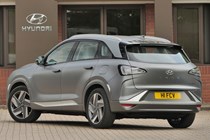
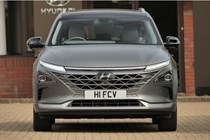
.jpg)
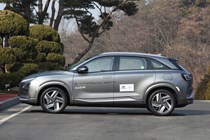
.jpg)
.jpg)







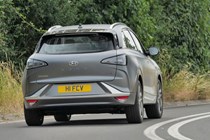

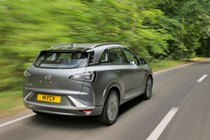

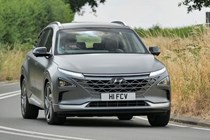


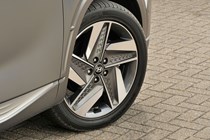
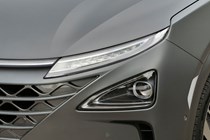

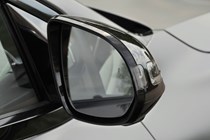
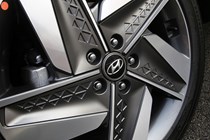
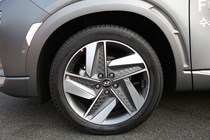
.jpg)
.jpg)
.jpg)

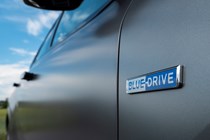
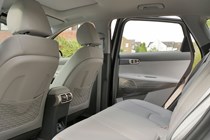
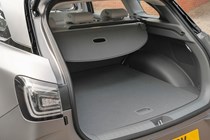

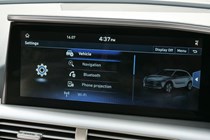
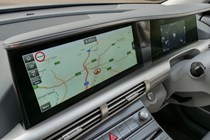
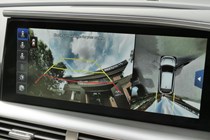
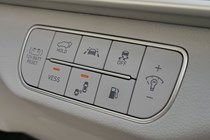

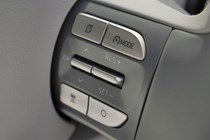
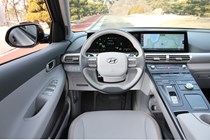
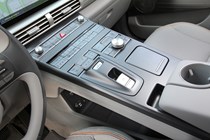
.jpg)
.jpg)
.jpg)
.jpg)
.jpg)
.jpg)
.jpg)
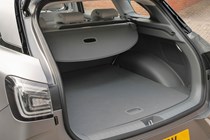
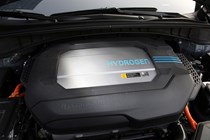
.jpg)

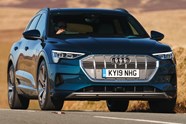







.jpg?quality=50)

.jpg?quality=50)
.jpg?quality=50)




















.jpg?quality=50)
.jpg?quality=50)
.jpg?quality=50)













.jpg?quality=50)
.jpg?quality=50)
.jpg?quality=50)
.jpg?quality=50)
.jpg?quality=50)
.jpg?quality=50)
.jpg?quality=50)


.jpg?quality=50)